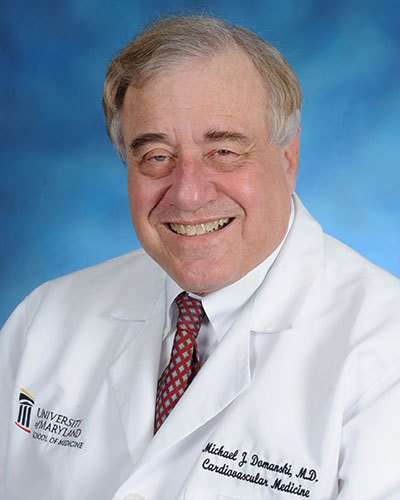May 17, 2023 | January Payne
UM School of Medicine Faculty Develop Tool to Assess Risks Earlier in Vulnerable Patients

The new research findings, published in March in the Journal of the American College of Cardiology, used data from the Coronary Artery Risk Development in Young Adults (CARDIA), which recruited about 5,000 healthy young adults from four U.S. cities and followed them for 30 years. The researchers were able to calculate from this data the cumulative effect of individual risk factors, such as high blood pressure, diabetes, elevated cholesterol, and the additive effects of multiple risk factors that can cause cardiovascular disease.
Black patients were found to have a 46 percent greater risk of developing heart disease compared to white patients. This finding is independent of other risk factors, including family history, smoking habits, and college attendance (a marker of socioeconomic status). Black patients also were found to be more susceptible to cardiovascular effects of uncontrolled high blood pressure as compared to white patients. White patients, on the other hand, were found to be more susceptible to elevated low-density lipoprotein (LDL) levels than Black patients.
“These data make clear the importance of instituting risk-factor reduction strategies as early in life as is feasible to reduce time-related cumulative exposure to harmful risks,” said study lead author Michael J. Domanski, MD, Professor of Medicine, at UMSOM. “These results suggest that a self-declared Black racial status is a marker of underlying and unexplained differences in risk-factor impact.”
The results of this study could help guide physicians in developing personalized prevention strategies for individual patients. Public health policymakers also could use the new risk calculation tool to assess the likely impact of proposed heart disease prevention programs, while researchers could use it to help design clinical trials to test heart disease prevention strategies.

The R Shiny app, developed in this study, is a tool that allows medical providers to insert cardiovascular risks, patient history, and patient race to determine individual risks and how best to address them. Electronic medical records are now widely available, making the development of tools such as the R Shiny app possible. R Shiny can be used to estimate cardiovascular risks after age 40 based on severity of risk factors earlier in adulthood. The app is hosted on NHLBI’s website.

During the two-decade follow-up period after age 40, the researchers found that 316 people in the study experienced their first cardiovascular event, including heart disease, strokes, and congestive heart failure.

The CARDIA data used for this research is supported by NHLBI in collaboration with the University of Alabama at Birmingham (HHSN268201800005I and HHSN268201800007I), Northwestern University (HHSN268201800003I), University of Minnesota (HHSN268201800006I), and the Kaiser Foundation Research Institute (HHSN268201800004I).
About the University of Maryland School of Medicine
Now in its third century, the University of Maryland School of Medicine was chartered in 1807 as the first public medical school in the United States. It continues today as one of the fastest growing, top-tier biomedical research enterprises in the world -- with 46 academic departments, centers, institutes, and programs, and a faculty of more than 3,000 physicians, scientists, and allied health professionals, including members of the National Academy of Medicine and the National Academy of Sciences, and a distinguished two-time winner of the Albert E. Lasker Award in Medical Research. With an operating budget of more than $1.3 billion, the School of Medicine works closely in partnership with the University of Maryland Medical Center and Medical System to provide research-intensive, academic, and clinically based care for nearly 2 million patients each year. The School of Medicine has nearly $600 million in extramural funding, with most of its academic departments highly ranked among all medical schools in the nation in research funding. As one of the seven professional schools that make up the University of Maryland, Baltimore campus, the School of Medicine has a total population of nearly 9,000 faculty and staff, including 2,500 students, trainees, residents, and fellows. The combined School of Medicine and Medical System (“University of Maryland Medicine”) has an annual budget of over $6 billion and an economic impact of nearly $20 billion on the state and local community. The School of Medicine, which ranks as the 8th highest among public medical schools in research productivity (according to the Association of American Medical Colleges profile) is an innovator in translational medicine, with 606 active patents and 52 start-up companies. In the latest U.S. News & World Report ranking of the Best Medical Schools, published in 2021, the UM School of Medicine is ranked #9 among the 92 public medical schools in the U.S., and in the top 15 percent (#27) of all 192 public and private U.S. medical schools. The School of Medicine works locally, nationally, and globally, with research and treatment facilities in 36 countries around the world. Visit
Contact
January Payne
Director of Public Relations
University of Maryland School of Medicine
january.payne@som.umaryland.edu

